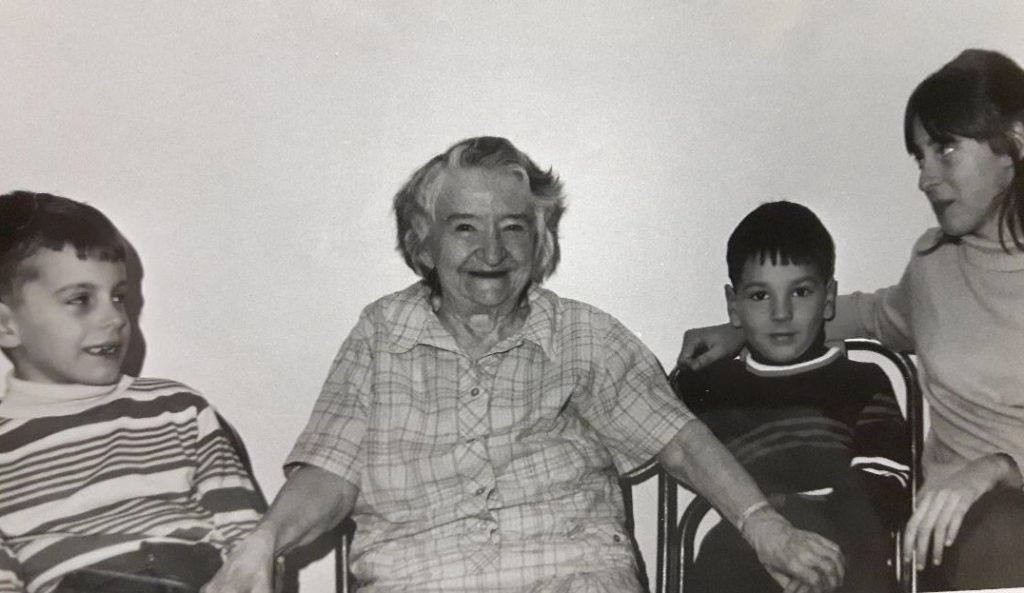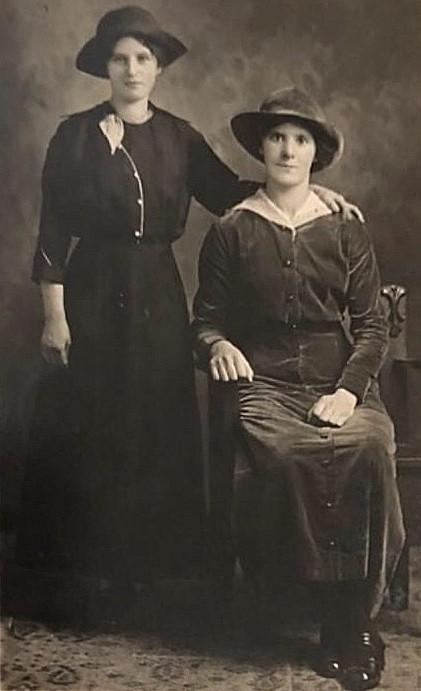This is the seventh in a series of columns about the 70 British Home Children sent to St. Patrick’s Catholic Orphanage in Prince Albert between 1901 and 1907. While all orphanage records were destroyed in the terrible fire of 1947, every attempt has been made to trace the life stories of these dispossessed children through genealogy websites and newspaper databases.
Institutional Trauma: Lillian and Mary Keating
“She was unable to live comfortably in a somewhat normal household as she had always been used to an institution. At some point my grandfather committed her to Brandon Mental Institute where she lived her entire life before going into a nursing home and dying there eventually.” -Valerie McIntyre, email to author, 8 July 2022
In her study of the institutional experiences of female British Home Children placed in the care of St. Joseph’s Catholic Orphanage in Western Australia (PhD thesis, Murdoch University, 2018), Diane Parker writes, “One of the saddest experiences for many of the women … was when they left the orphanage.” At age 16, British girls warehoused in Australia since childhood would leave the confines of the orphanage to work as domestic servants. “Most of the women recalled that their lack of knowledge about the processes and systems of the outside world resulted in a variety of challenges for them,” Parker continues. “Some recalled being exploited and abused by the families they were sent to, while others entered into unsuitable relationships because they were fearful of being alone. One young woman joined the convent simply because she was too fearful to leave the security of the orphanage.”
This was the case with Lillian Keating. Her mind and spirit were shattered by institutional life, and she struggled whenever she stepped into outside world.
Lillian (1895-1980) and her older sister Mary Elizabeth Keating (1893 -1980) spent their entire childhoods in various institutions. “My Grandmother had memories of living in a Bristol workhouse and having to do heavy labor as a toddler with her sister and being separated from her brother and father,” Lillian’s granddaughter Valerie McIntyre told me in an email message. “She remembered having to scrub the floor with a tiny little brush for hours until her fingers bled and was beaten if she complained or cried.”
The emotional upheavals Lillian experienced in the workhouse were further exacerbated by the trauma she experienced when she was uprooted to Canada in October 1903.
Alexander Keating (1867-1947) of Bristol, Gloucestershire, England and his wife Elizabeth Griffin (1870-1896) had four children: John (1893-1916), Mary, Lillian, and Alexander (1896-1897). Elizabeth died shortly after the birth of her fourth child, and Alexander, a hairdresser by trade, had difficulty looking after his remaining three children. By the fall of 1899, the Keatings were in Southwark Union Workhouse in London. They were in and out of workhouses in London and Bristol until four years later, when Lillian and Mary embarked from Liverpool aboard the Bavarian with 18 other children. Their brother John remained in England where he died of tuberculosis at age 23 in 1916.
Lillian and Mary arrived in Quebec City on 23 October 1903 then boarded a train bound for Prince Albert. There they spent their school years at St. Patrick’s Catholic Orphanage.
In her reminiscences published in Monica Plante’s history of St. Patrick’s (1988), Mother Superior St. Sylvester paints a rosy picture of girls’ experiences in the orphanage. “[W]e showed the girls how to sew, to take care of house chores, and to cook. … On holidays, the girls, after cleaning the house, went for long walks around the city to visit various delightful spots, or run on the hills that cradled the city, or stroll the shores of the beautiful [North] Saskatchewan River. They were good girls, and together we lived as a real family. They loved these outings, more than they did the catechism lessons and Bible history I taught them in my big room, with them sitting on their heels around me.”
The 1916 Canada census shows that 20-year-old Mary Keating was working as a servant at the newly built (1910) Holy Family Hospital on 15th Street West. In 1920, Mary married William Frank Roberts in Prince Albert. They farmed at Briarlea northwest of the city and had three children. Mary died on 21 February 1980 in North Vancouver, BC.
Lillian went down a completely different path from that of her sister. The 1916 census reveals that Lillian, age 19, was an inmate in the Home of the Good Shepherd, a home for delinquent Catholic girls in Selkirk, Manitoba. Founded in 1911, the home was operated by the Sisters of Our Lady of Charity of the Good Shepherd. “The Sisters kept detailed records of all the girls under their care … sentenced from a few months to several years for vagrancy, theft, fraud, prostitution and even for being ‘incorrigible’.” (Source: City of Winnipeg, Historical Buildings Committee. “Marymound School Complex,” 2011) I have not yet discovered why Lillian was there.

Lillian married John Goffard (1886–1969) on 5 January 1921 in Winnipeg; they farmed near Dauphin, Manitoba and had three sons. Their first son died from malnutrition at five months old. John committed his 38-year-old wife to the Brandon Mental Hospital in 1935 where she remained for the rest of her life. According to Valerie McIntyre, he described Lillian as “an unfit housewife unable to properly care for her babies.”
“When she lived with my grandfather on the farm she did not have the proper skills and tools to run a household, to develop a loving relationship or to raise children,” Valerie told me. “Neither did she have anyone to help her or guide her.” John Goffard refused to pay for a hospital stay, so Lillian had her babies at home by herself. After his wife was institutionalized, Goffard turned their two remaining sons, Stephen and Martin, over to foster care.
“I knew my grandmother very well and have fond memories of her,” Valerie continued. “She was only 4 ft 11 in and the sweetest lady I’ve ever met. I can’t imagine living the type of life that she had. But she never spoke of her past and I didn’t even know about the British Home Child scheme until just a few years ago when I started exploring my roots. I have memories of my father bringing his mother home for Christmas. She could not cope with all the excitement of the holiday festivities, and he had to take her right back to the institution.”
Lillian Keating was not the only British Home Child damaged by the cumulative effects of multiple stresses. In his book, Uprooted (2010), Roy Parker concludes that even for the most resilient of the children, damage was most likely done. “Expatriation to an unknown and strange country was often superimposed on the emotional upheavals that many had already experienced prior to their emigration,” Parker writes. “[M]aterial hardship alone left fewer scars than the emotional consequences of alienation, of abuse (both physical and sexual), of the sense of rejection and of the lack of love. As one woman put it, ‘the hurt is inside’.”


